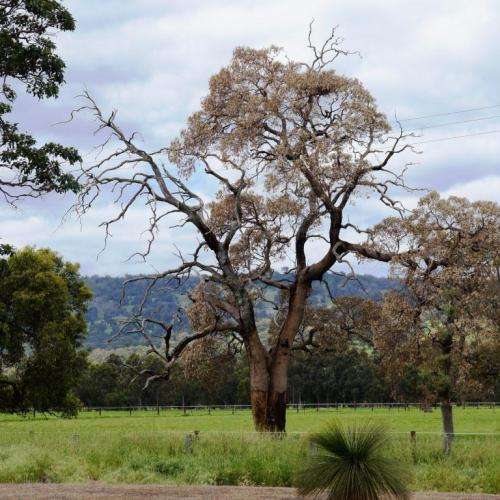Capturing tree data with free smartphone app

Murdoch University researchers have helped develop a new smartphone application that will allow the public to record incidences of marri canker and Quambalaria shoot blight (QSB) from Geraldton to Albany.
Now available for Android and iPhone, the app was developed with the Eastern Metropolitan Regional Council, with pilot testing by the Cape-to-Cape Catchments Group.
Professor Giles Hardy from Murdoch's Centre of Excellence for Climate Change, Woodland and Forest Health said a great deal of effort had been put into creating an app that was easy to use while providing robust data for research purposes.
"We wanted to create an app to capture data for a number of our research questions. The app will allow us to assess the role of human activity on marri disease prevalence, the presence of other pathogens such as Phytophthora and the identification of trees with natural resistance," Professor Hardy said.
"This data will help us understand the dynamics of disease prevalence and will hopefully eventually inform a state-wide treatment plan."
The Centre's Cielito Marbus said the app provided numerous images of trees infected by marri canker and QSB as well as brief descriptions. Upon encountering the disease, citizen scientists could access easy-to-fill-in fields for GPS point, species type, disease records and photos of the affected tree.
The recent widespread distribution of both marri canker and QSB means action is needed now.
"The disease is widespread across much of the marri range, with very high impact in the Dunsborough-Margaret River-Augusta region as well as the Perth hills, which has 78 per cent of trees cankered in the urban, peri-urban and along roads or other disturbed areas," Ms Marbus said.
"While marri canker is a native pathogen, it's causing much more damage now than in the past, which suggests either something is making the trees more susceptible or it has changed to become more pathogenic.
"As for QSB, in the 1990s, there were a handful of trees in the South West infected, but it's now become widespread. While it doesn't kill trees outright, it inhibits the growth of leaves, flowers, fruit and seeds which are vital sources of food for native birds such as cockatoos, and it affects the ability of trees to recover after fire.
"We would encourage as many people as possible to down load and use the app in order to help conserve WA's vital woodlands."
Provided by Murdoch University


















